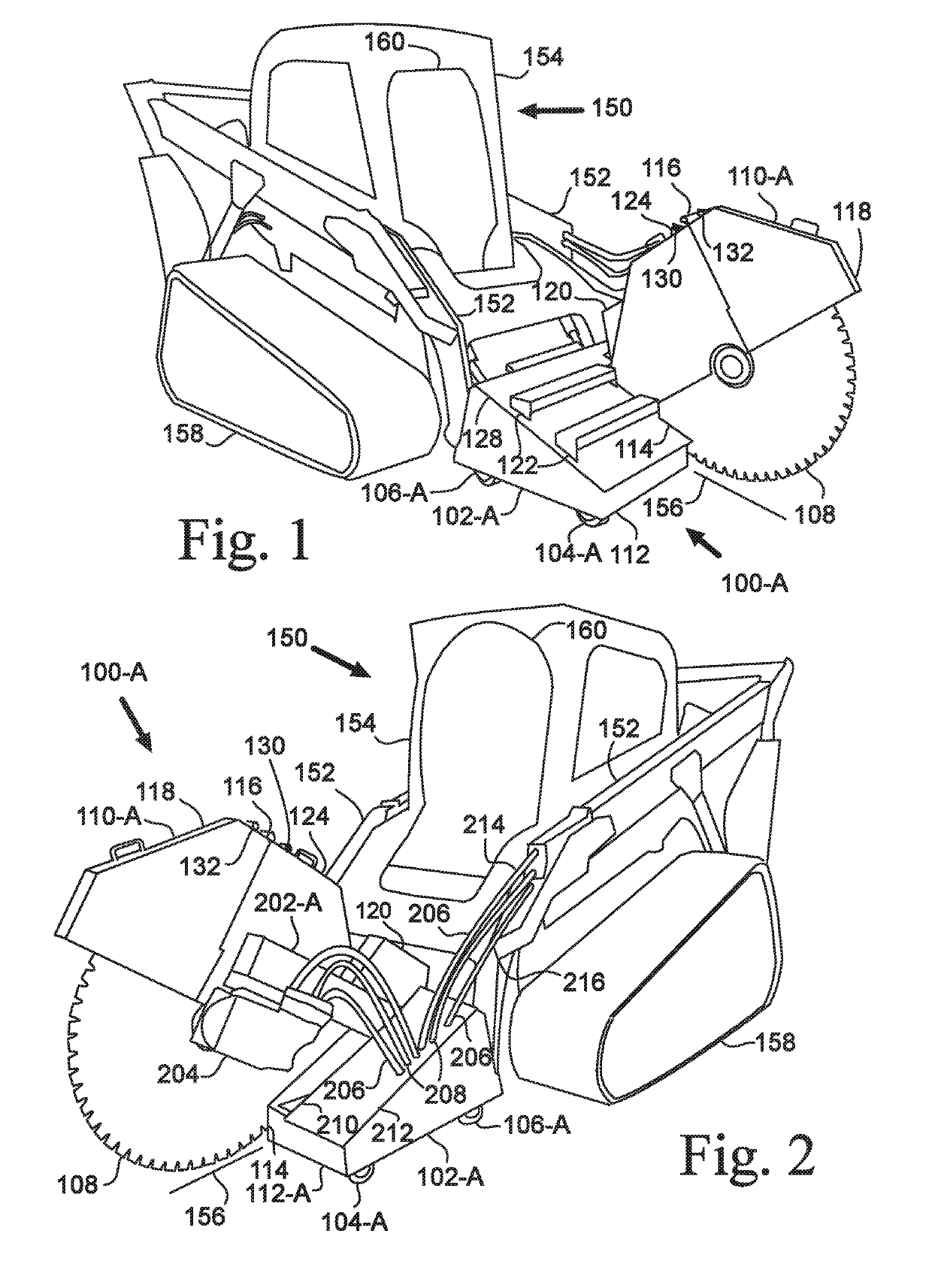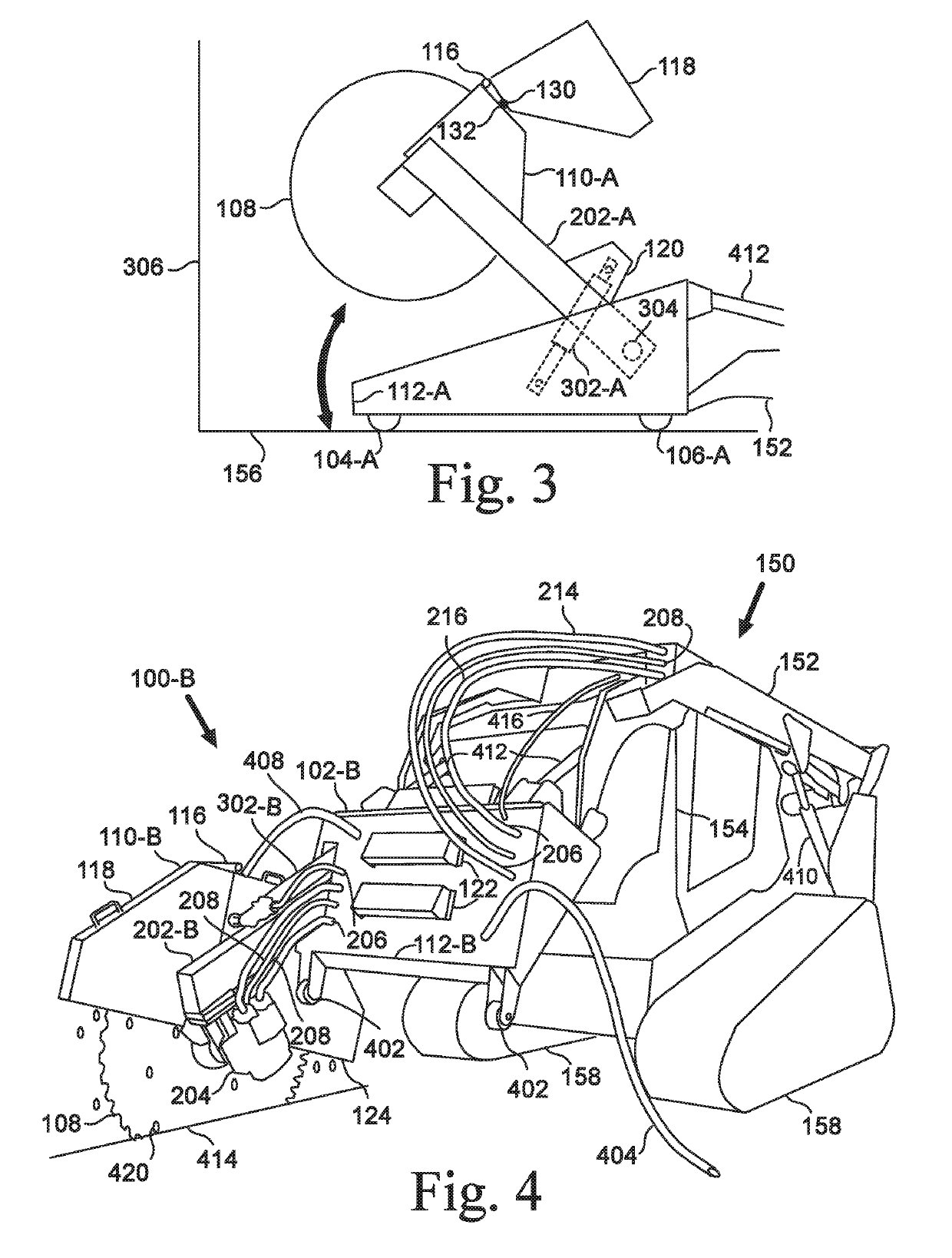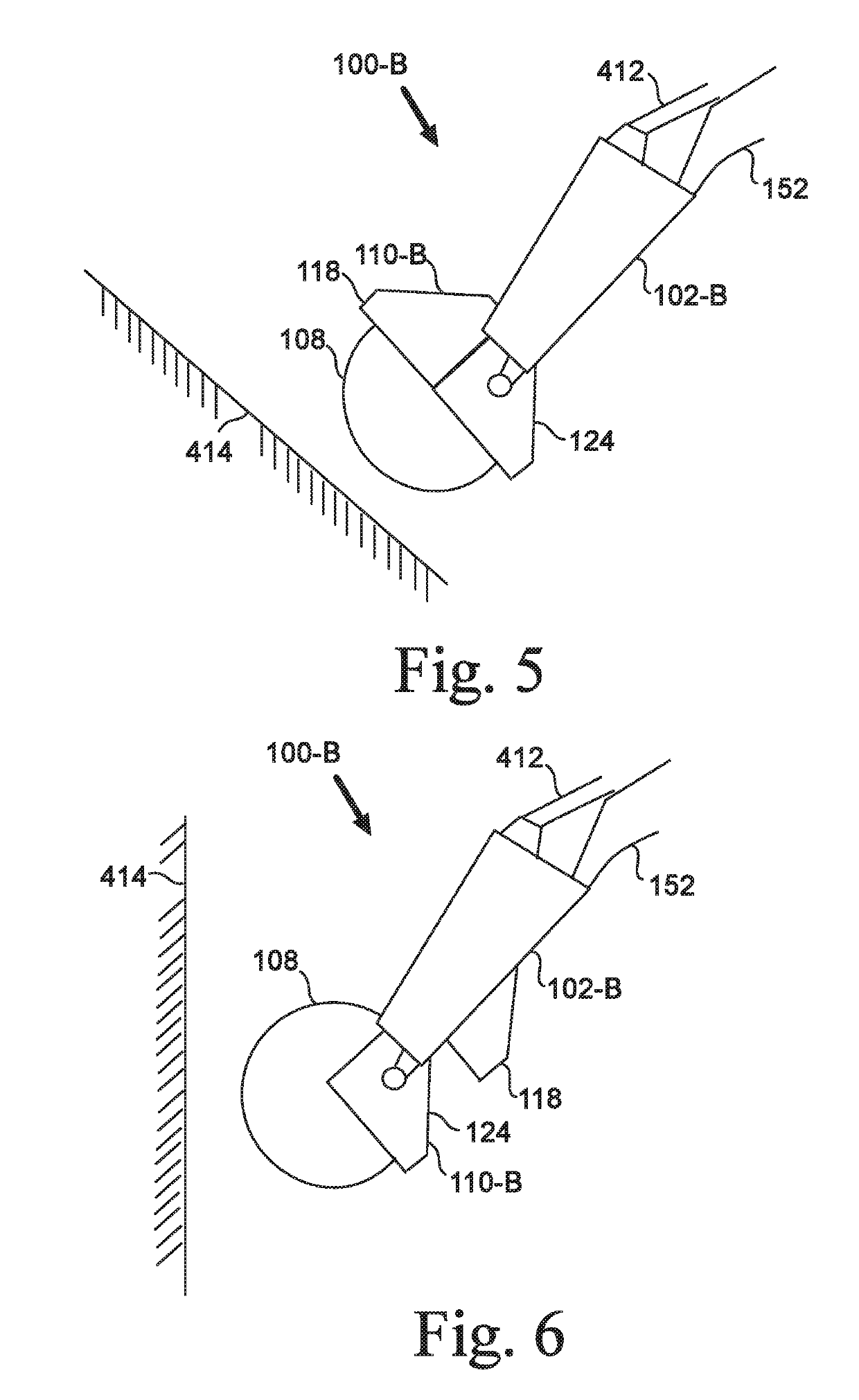Skid steer cutting attachment
a cutting attachment and skid steer technology, applied in the field of rotary cutters, can solve the problems of putting the operator in danger, blocking vision, and virtually impossible for the operator to effectively cut a raised surface such as concrete pipes, or a vertical surface such as walls
- Summary
- Abstract
- Description
- Claims
- Application Information
AI Technical Summary
Benefits of technology
Problems solved by technology
Method used
Image
Examples
Embodiment Construction
[0031]Skid steer attachment for cutting is disclosed. The skid steer attachment is generally indicated as 100, with particular embodiments and variations shown in the figures and described below having an alphabetic suffix, for example, 100-A or 100-B.
[0032]Various components are illustrated both generically and specifically in the figures and in the following description. For example, the houses 102-A, 102-B are discussed individually and separately to ensure clarity when describing the configuration of each skid steer attachment 100-A, 100-B. The house 102, when referred to collectively, is referenced without the alphanumeric suffix.
[0033]FIGS. 1 and 2 illustrate an attachment 100-A mounted on a skid steer 150. The skid steer 150 is a rigid-frame, engine-powered mobile machine with lift arms 152 suitable for attaching a wide variety of tools and attachments. The skid steer 150 often has one or more hydraulic circuits 206, which include a pressure line 214 and return line 216, that...
PUM
| Property | Measurement | Unit |
|---|---|---|
| pressure | aaaaa | aaaaa |
| width | aaaaa | aaaaa |
| hydraulic pressure | aaaaa | aaaaa |
Abstract
Description
Claims
Application Information
 Login to View More
Login to View More - R&D
- Intellectual Property
- Life Sciences
- Materials
- Tech Scout
- Unparalleled Data Quality
- Higher Quality Content
- 60% Fewer Hallucinations
Browse by: Latest US Patents, China's latest patents, Technical Efficacy Thesaurus, Application Domain, Technology Topic, Popular Technical Reports.
© 2025 PatSnap. All rights reserved.Legal|Privacy policy|Modern Slavery Act Transparency Statement|Sitemap|About US| Contact US: help@patsnap.com



